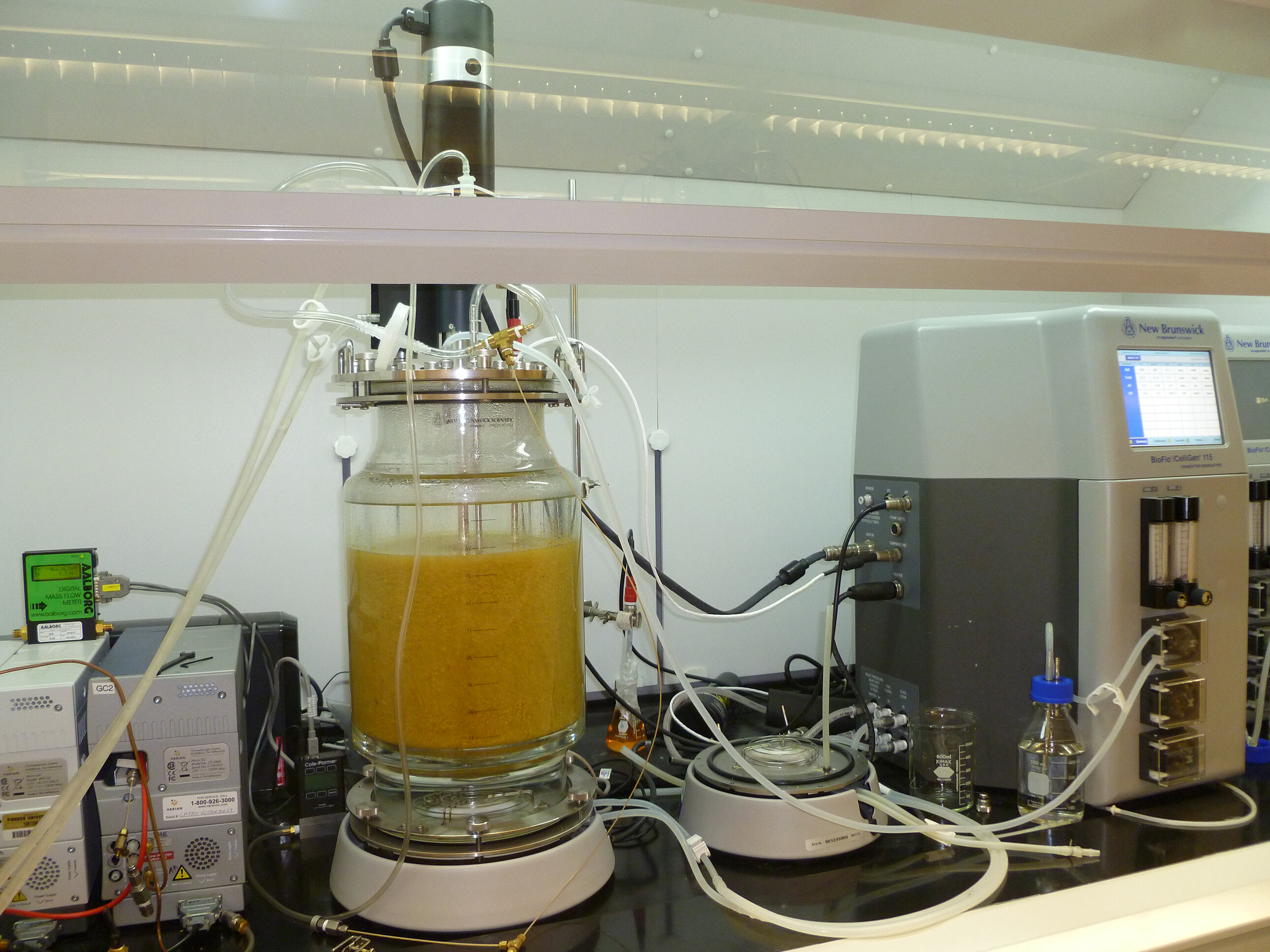
Americans discard as much as 40 percent of their food, worth about $200 billion a year, according to the U.S. Department of Agriculture. A simple new method from Purdue University scientists could help cut down that amount of waste—and provide another renewable source of clean energy.
The Purdue scientists developed a method to improve the production of hydrogen from food waste using yeast. Until now, the production of hydrogen for use as clean fuel has largely been through bacterial degradation of food waste, which can lead to slow production rates and complex preprocessing of the raw material.
This new method uses yeast to break down food waste to clean hydrogen for further use with minimal preprocessing steps.
"We wanted to create a simple way to turn all that food waste into a source of clean energy," said Robert Kramer, the NiSource Charitable Foundation Professor of Energy and the Environment and a professor of physics at Purdue University Northwest. "Our system basically allows a user to take food waste, grind it, place it in a reactor and use our process to create hydrogen in about 18-24 hours. That's much faster than the days it takes with other methods."
Kramer, who also serves as director of the Purdue Northwest Energy Efficiency and Reliability Center, and his team have validated the technology using a variety of yeast strains. He estimates the Purdue system could lead to a 20 percent-25 percent increase in efficiency when producing hydrogen from food waste compared with current methods.
Kramer said the method could be easily multiplexed with solar thermal technology to make a stand-alone power source, in addition to being a clean fuel source and having numerous applications in the agrofood and transportation industries. Kramer said the Purdue method also does not involve the risk of explosion that can come with hydrogen as an energy source.

Citation: A simplified way to turn food waste into hydrogen energy (2020, January 8) retrieved 8 January 2020 from https://techxplore.com/news/2020-01-food-hydrogen-energy.html
This document is subject to copyright. Apart from any fair dealing for the purpose of private study or research, no part may be reproduced without the written permission. The content is provided for information purposes only.
